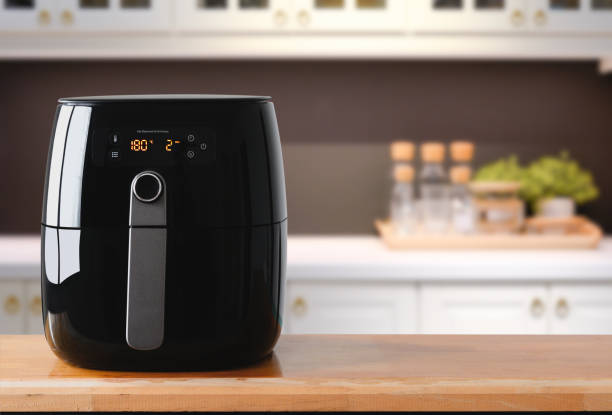How To Choose a Kitchen Knife: Tips for Choosing a Perfect Kitchen Knives Set
Choosing the right kitchen knife is like selecting a dance partner-it needs to be the perfect fit to help you move with ease and confidence through your culinary routines.
With the myriad of options available, selecting the ideal knife set can be overwhelming, whether you’re a seasoned chef or a home cook. This guide aims to cut through the confusion and help you make an informed decision.
How To Choose a Kitchen Knife?
In every kitchen, knives are the quintessential tools of the culinary craft. They are the workhorses, tasked with a variety of jobs, from the precise art of julienning vegetables to the robust task of breaking down meats.
A good set of knives can elevate your cooking precision, efficiency, and enjoyment. This guide will walk you through the essential considerations for choosing a knife set that meets your needs, preferences, and budget.
Also Read: How Do You Use an Air Fryer for The First Time
1. Understanding Knife Types
The Essentials of the Knife World
Before diving into a purchase, familiarize yourself with the different types of knives:
- Chef’s Knife: The versatile all-rounder, perfect for chopping, slicing, and dicing.
- Paring Knife: Ideal for peeling and other small or intricate work.
- Bread Knife: A serrated blade that’s essential for slicing through crusty bread without crushing it.
- Utility Knife: Smaller than a chef’s knife but larger than a paring knife, it’s good for miscellaneous cutting.
- Carving Knife: Designed for slicing thin cuts of meat.
- Santoku Knife: A Japanese-style knife that’s great for slicing, dicing, and mincing.
Understanding the purpose of each knife will guide you in selecting a set that covers your most common cooking tasks.
Also Read: How to Cook Rice, the Asian Way
2. Blade Material
The Cutting Edge of Knife Technology
The material of the knife blade will affect its sharpness, longevity, and ease of maintenance. Here are the most common materials:
- Stainless Steel: Durable, easy to sharpen, and resistant to rust. However, it can lose its edge quicker than other materials.
- Carbon Steel: Known for its sharpness and ease of honing, carbon steel requires more maintenance to prevent rust.
- High-Carbon Stainless Steel: Combines the best of both worlds with easier maintenance and better edge retention.
- Ceramic: Stays sharp for a long time and doesn’t rust, but can be brittle and challenging to sharpen.
Choose a material that aligns with the amount of time you’re willing to invest in maintenance and the performance you expect from your knives.
Also Read: How to Enjoy Cooking Even on Busy or Stressful Days
3. Handle Comfort and Material
The Grip of the Matter
A knife should feel comfortable and balanced in your hand. The handle is just as important as the blade since it can affect your control and fatigue levels during use. Handles come in a variety of materials:
- Wood: Classic and comfortable but requires more maintenance.
- Plastic: Durable and easy to clean but may feel less premium.
- Composite: A blend of materials offering durability and a more comfortable grip.
- Stainless Steel: Offers a sleek look and durability but can be slippery when wet.
Test how the handle feels in your grip and consider the weight and balance of the knife.
Also Read: Your Guide to Always Keeping Things Clean
4. Knife Construction
The Anatomy of Quality
Knives are constructed in two main ways:
- Forged Knives: Created from a single piece of metal that’s been heated and hammered into shape. They are typically heavier and offer better balance.
- Stamped Knives: Cut out from a large sheet of metal and then honed and heat-treated for strength. They are lighter and usually less expensive.
Decide which construction method suits your cooking style and comfort preferences.
Also Read: How to Organize Your Kitchen For Cooking

5. Size and Weight
The Balancing Act
The size and weight of a knife affect its maneuverability. A heavy knife may make cutting easier but can lead to quicker fatigue, while a lighter knife offers more control but may require more effort for certain tasks. It often comes down to personal preference, so try handling a few knives to determine what feels right for you.
Also Read: Here is How Cooking Helps with Stress
6. Set Versus Individual Knives
Building Your Arsenal
While buying a set can be cost-effective and provide a matching collection, you may end up with knives you don’t need. Consider building your set individually based on what you will use the most. Start with a few essential high-quality knives and add on as needed.
7. Price Point
Investing Wisely
Price can be indicative of quality, but the most expensive knives aren’t always the best choice for everyone. Invest according to your level of cooking and how often you’ll use them. Sometimes, a mid-range set offers the best value for performance and longevity without breaking the bank.
8. Care and Maintenance
The Key to Longevity
Consider how much time you’re willing to devote to knife care. Knives will need to be sharpened and honed regularly to maintain their edge. Some materials require more frequent care than others, and not all knives are dishwasher safe.
Wrappng Up:
Selecting the right kitchen knife is a personal and important culinary decision. It’s about finding the right balance between utility, comfort, care, and cost. Take the time to research and handle different knives before making a purchase.
Remember that a good knife is an investment in your culinary future, making every slice, dice, and chop a pleasure. Whether you’re a novice cook or a seasoned chef, the right knife can make all the difference in your kitchen endeavors.
Choose wisely, and your knives will be your trusted partners for many meals to come. With these guidelines, you’re now equipped to slice through the market’s options and carve out the perfect set for your kitchen.






